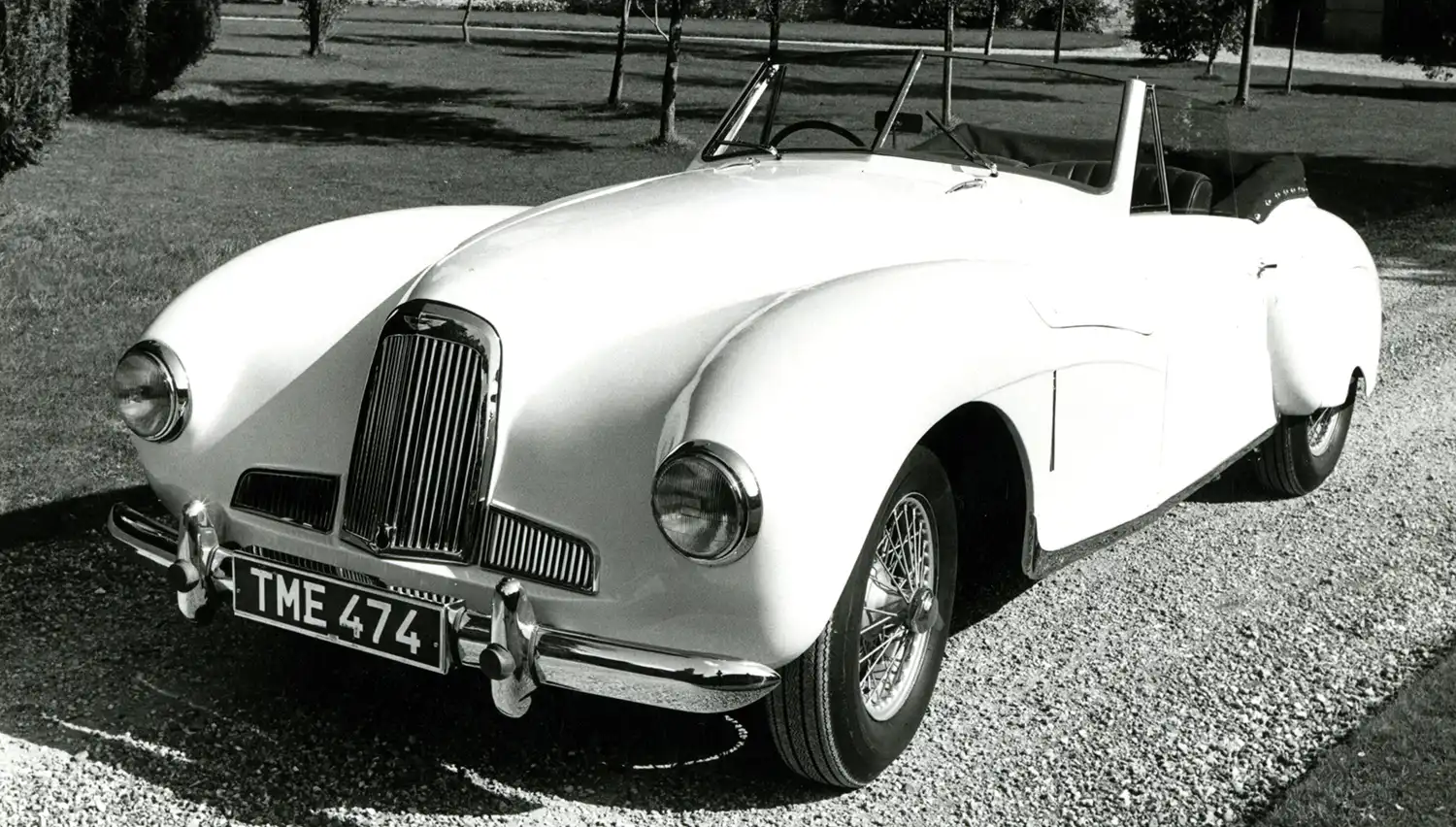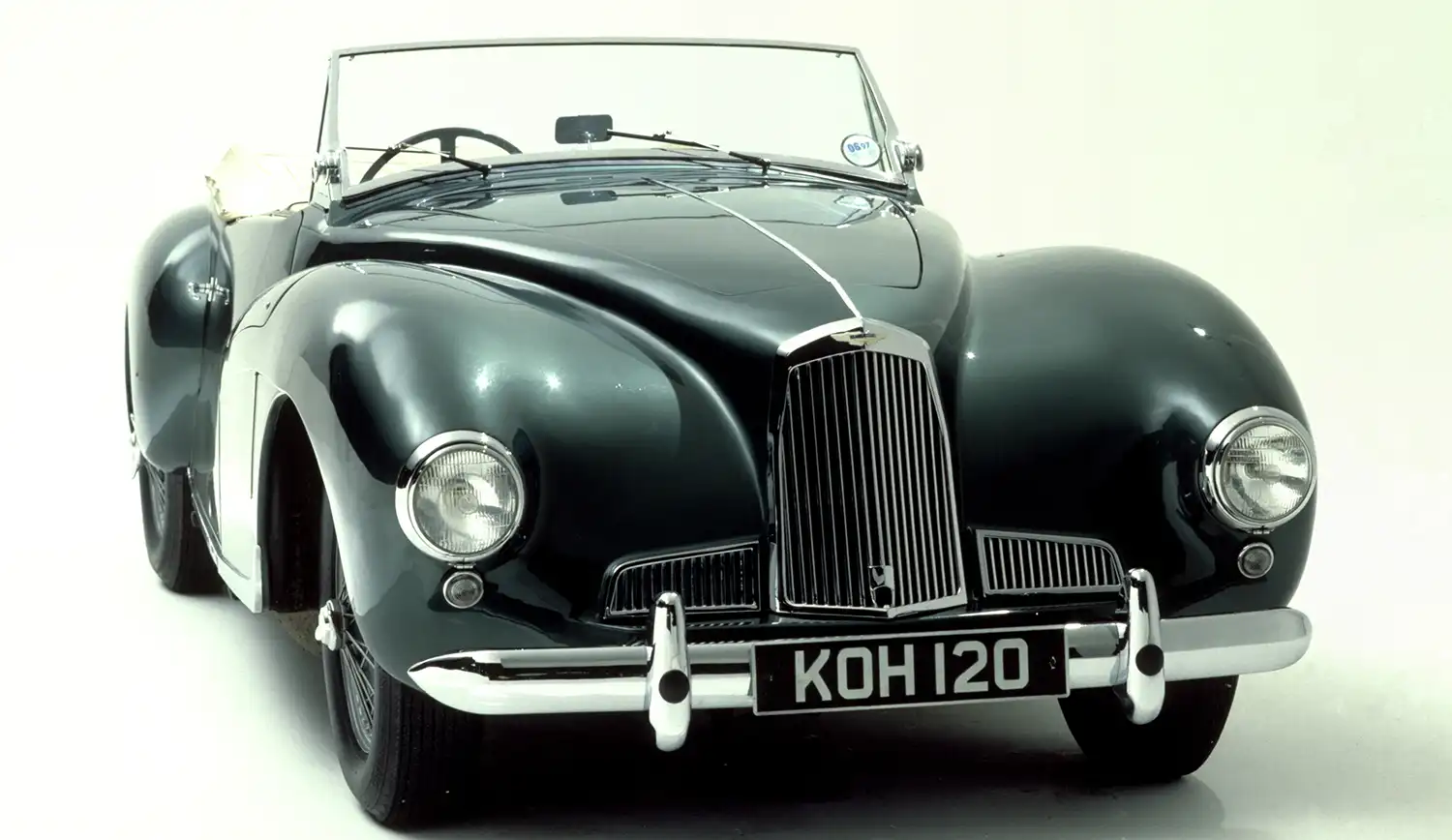
Imagine a world emerging from the shadows of war, where resources were scarce and hope was slowly rebuilding. In this landscape, a bold new chapter began for an iconic British marque, one that would lay the very foundation for its legendary future. We’re talking about the Aston Martin DB1, a car that, while perhaps less famous than its later siblings, holds immense significance as the very first vehicle produced under the visionary ownership of David Brown.
David Brown’s Vision Takes Hold
In 1948, the motoring world gathered at the Motor Show, eager to see what innovations the post-war era would bring. Aston Martin unveiled its “Two Litre Sports,” a car that would retrospectively earn the name DB1. This car represented more than just a new model; it symbolized a fresh start for Aston Martin under David Brown’s leadership. He acquired Aston Martin and, significantly, Lagonda, bringing not just assets but also talent like designer Frank Feeley into the fold.
A Design That Echoed its Time
Frank Feeley, a truly gifted stylist, shaped the DB1’s appearance. The car’s handsome lines were certainly a product of its time. While not revolutionary, the styling possessed an undeniable elegance. The DB1 utilized the Atom chassis construction, a pre-war prototype. This blend of existing foundations with new vision defined its creation. It was a clear signal of intent for the brand.
Power and Poise
Under the elegant hood of the Aston Martin DB1 lay a 2.0-liter (Two Litre) inline-four engine. This capable powerplant produced around 90 horsepower. Coupled with a four-speed manual transmission, it propelled the lightweight roadster. The DB1 was capable of reaching speeds of up to 93 mph. While not a blistering supercar by today’s standards, this performance was respectable for its era. It offered a genuinely engaging driving experience for those fortunate enough to get behind the wheel.
The Price of Post-War Luxury
The DB1 faced unique challenges, not least its eye-watering price tag. The post-war Labour government had imposed a double purchase tax on cars costing over £1,000. At £1,498, the Two Litre Sports incurred an additional tax of £833 14s 6d. This brought the total cost to a staggering £2,331 14s 6d in 1948 money. Such a cost made it an exclusive item. Only a select few could afford this level of automotive luxury.
Rarity Defines its Heritage
Due to its high price and the challenging economic climate, the Aston Martin DB1 remains exceptionally rare. Only 15 examples were ever produced between 1948 and 1950. This scarcity adds to its allure and significance today. Each DB1 tells a story of perseverance and luxury in a rebuilding world. Its rarity highlights its role as a pivotal, yet exclusive, model.
Setting the Stage for Greatness
The DB1 may not have been a commercial bestseller. However, it successfully laid the groundwork for Aston Martin’s future “DB” series. This lineage would include some of the most famous cars in automotive history. It showcased David Brown’s commitment. It demonstrated his vision for the brand. The DB1 began a dynasty of legendary cars. It proved that Aston Martin was back.
Summary The Aston Martin DB1, originally known as the Two Litre Sports, holds a crucial place in the marque’s heritage as the first car under David Brown’s ownership. Launched in 1948, its handsome Frank Feeley design and capable 2.0-liter engine offered post-war luxury and respectable performance. Despite its prohibitive cost and limited production of just 15 units, the DB1 marked the vital beginning of the iconic “DB” lineage, cementing its status as a foundational automotive icon.
Disclaimer: Historical information and specifications are based on available records and may vary. Always verify details from official sources.
Source: Aston Martin
